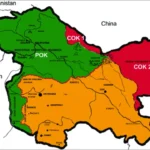Date: April 20, 2025
Washington D.C./New Delhi – The United States has announced the imposition of new tariffs on a range of Indian goods, citing concerns over trade imbalances and unfair market access. The move marks a fresh chapter in the evolving economic relationship between the two democracies, as Washington recalibrates its trade policies in response to domestic pressures and global competition.
The decision, confirmed by the U.S. Trade Representative’s (USTR) office, affects products including textiles, steel, aluminum, and select pharmaceutical exports from India. Tariff rates on these items will range from 10% to 25%, effective immediately.
Reasons Behind the Move
According to a USTR statement, the tariffs are intended to “address long-standing barriers to American exports and ensure reciprocal treatment for U.S. products in India.” The U.S. has raised concerns over India’s import restrictions, local content requirements, and alleged discriminatory policies in sectors like e-commerce and digital trade.
This action follows a review of India’s trade practices under Section 301 of the U.S. Trade Act, which allows the government to impose penalties on countries deemed to be engaging in unfair trade practices.
Indian Government Responds
India’s Ministry of Commerce expressed disappointment over the U.S. decision, calling it “unilateral and against the spirit of bilateral cooperation.” Officials have hinted at exploring retaliatory tariffs and have urged Washington to resolve trade issues through dialogue.
“India remains committed to a rules-based global trading system and is open to constructive engagement,” the ministry stated.
Impact on Trade and Industry
Industry experts believe the tariffs could impact India’s export-driven sectors, particularly small and medium enterprises that rely on the U.S. market. American businesses that depend on Indian inputs, especially in the pharmaceutical and textile industries, may also face increased costs.
Economists warn that the move could strain trade ties between the two nations, which had been on a path of gradual improvement following past disputes. Bilateral trade between India and the U.S. reached approximately $192 billion in 2024, making the U.S. India’s largest trading partner.
Geopolitical Implications
The imposition of tariffs comes at a time when both countries are seeking closer cooperation in strategic and defense sectors, particularly in the Indo-Pacific region. Analysts suggest that trade tensions, if not addressed promptly, could cast a shadow over broader diplomatic engagement.
Looking Ahead
Diplomatic sources indicate that both sides are likely to engage in high-level discussions in the coming weeks to defuse tensions. With elections looming in both countries, political leaders may seek to balance domestic economic concerns with the imperative of maintaining strong bilateral relations.
While the tariffs underscore ongoing friction in global trade dynamics, observers hope they will pave the way for a more equitable and mutually beneficial framework between India and the United States.





